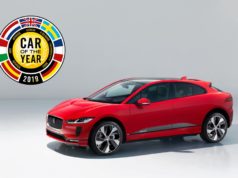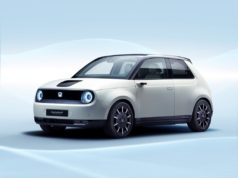Volkswagen is the first automotive manufacturer using the latest 3D printing technology: the “HP Metal Jet” process simplifies and speeds up metallic 3D printing. The biggest advantage: productivity improves fifty times compared to other 3D printing methods and depending on the component. Hence, for the first time, three-dimensional printing is mass production ready in the automotive industry. Together with printer manufacturer HP and component manufacturer GKN Powder Metallurgy, Volkswagen is, therefore, pressing ahead with the development of the technology for mass production. The partners presented the new process for the first time at the International Manufacturing Technology Show (IMTS) in Chicago.
Dr Martin Goede, Head of Technology Planning and Development, Volkswagen, said:
“Automotive production is facing major challenges: our customers are increasingly expecting more personalization options. At the same time, complexity is increasing with the number of new models.
That’s why we are relying on state-of-the-art technologies to ensure a smooth and fast production. 3D printing plays a particularly important role in manufacturing of individual parts.”
A Volkswagen vehicle consists of 6,000 to 8,000 different parts
Previous 3D printing processes can, however, only be used for the special production of individual parts or prototypes. The additive 3D Metal Jet technology from HP enable the production of a large number of parts using 3D printing for the first time. That happens without having to develop and manufacture the corresponding tools. This significantly reduces the time required to manufacture parts. The process is now also interesting for the production of large quantities in a short period of time.
“That’s why the new HP Metal Jet platform is an important step into the future for us as an automotive manufacturer, but also for the entire industry. And we look forward to helping shape this development and thus creating further added value for our customers in the future,” Dr Goede continued.
Volkswagen is further developing the technology so that design elements go to print in a small series at first
This will be the prerequisite, to be able to produce individualized design parts such as tailgate lettering, special gear knobs or keys with personalized lettering for customers without a great deal of effort. The plan is to be able to offer this kind individualization proposition to customers as soon as possible.
As early as next year, GKN Powder Metallurgy intends to establish a process chain. The first small (design) components are to be used to further develop the technology. This way the first structural components for mass- production vehicles can go to printing within two to three years.
“A complete vehicle will probably not be manufactured by a 3D printer any time soon. But the number and size of parts from the 3D printer will increase significantly,” explained Dr Goede. “Our goal is to integrate printed structural parts into the next generation of vehicles as quickly as possible. In the long term, we expect a continuous increase in unit numbers, part sizes and technical requirements – right up to soccer-size parts of over 100,000 units per year.”
The new 3D printing process using the HP Metal Jet process is an additive process
The machine makes layer by layer using a powder and binder. Then is the turn of the sintering process – the component goes through “baking”. This differs from previous processes in which a laser melts powder.
Stephen Nigro, President of 3D Printing at HP Inc, said:
“Volkswagen is driving unprecedented innovation as the automotive industry goes through its most transformational era since cars first rolled off the assembly line. “We’re proud to collaborate with Volkswagen to identify opportunities for production based on HP’s new Metal Jet 3D printing platform. Together we are engineering and testing solutions for mass-customization and the creation of higher-performance, lower-cost functional parts. And as electrification ushers in entirely new vehicle architectures, we’re excited to collaborate on future 3D applications such as the lightweighting of fully functional and safety certified metal parts.”
Design masterpiece. #blackandwhite #design #vwarteon #volkswagen pic.twitter.com/jJccozGnQD
— Volkswagen (@Volkswagen) September 17, 2018

































